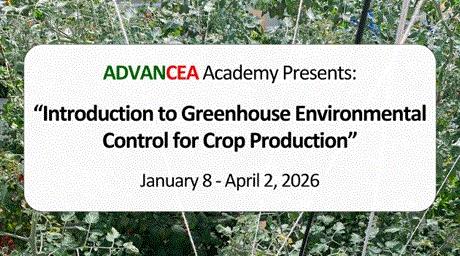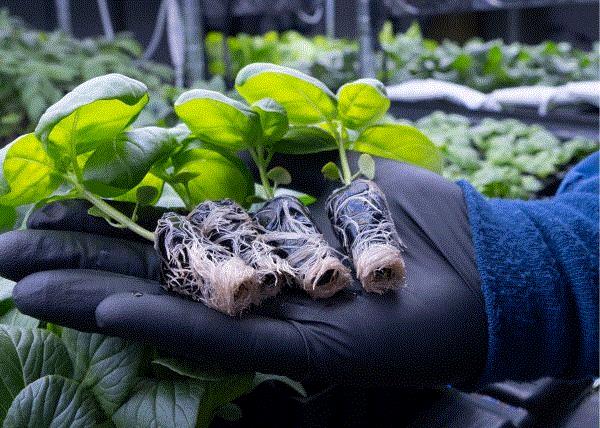LI-COR and Chlorophyll Fluorescence
This past week I attended a workshop on gas exchange measurements and chlorophyll fluorescence put on by LI-COR. Using LI-COR’s LI 6800, both parameters can be measured, giving researchers direct insight into how efficiently plants are photosynthesizing. While I appreciate the nuance of light reactions and carbon fixation, when I’m talking with non-scientists, I just describe the 6800 as “a machine I can talk to plants with.” The LI-6800 is a remarkable tool for research, but it’s not meant to guide real-time decisions in a greenhouse. It’s built for precision science, not daily crop management.
A few months ago, I mentioned “Plant Empowerment: The Basic Principles,” a textbook that reframes greenhouse management around the plant itself. Rather than chasing static set points for temperature or humidity, it focuses on maintaining physiological balance (energy, water and assimilates) so the plant remains in control of its own growth.
Bringing these ideas together suggests a system in which automated greenhouse controllers could “listen” to the plants, adjusting climate based on performance rather than set points. There are many ways to sense how well plants are growing, through changes in light reflectance, water status or stomatal behavior, but chlorophyll fluorescence offers one of the most direct windows into photosynthetic health. In addition, fluorometry is nonintrusive and technologically accomplishable. It’s a straightforward and meaningful signal that could help translate plant responses into actionable climate control decisions.
If you’re interested in learning more about chlorophyll fluorescence, a great (and a bit dense) article can be found here.

Priva and Gardin
With this goal in mind, Priva and Gardin have announced a strategic partnership. Gardin, a company specializing in real-time chlorophyll fluorometry, will integrate its plant-sensing technology with Priva’s greenhouse climate control systems.
What excites me most about this collaboration is the potential to create a true central hub for control. Every new product tends to come with its own app and interface: lighting, irrigation, EC and pH control, and so on. While juggling these platforms may be manageable, the real challenge lies in connecting their insights. In an era driven by data science, machine learning and AI, building a unified dataset that links environmental variables, control inputs and plant performance could unlock the kind of system-level understanding needed to run more resource-efficient, high-yielding operations.
Beyond efficiency, systems like this could also transform how growers validate changes and test new technologies. Real-time monitoring of plant photosynthesis provides immediate feedback on how a crop responds to new fertilizers, lighting regimes or environmental tweaks, bridging the gap between experimentation and actionable management.
Check out the announcement from Priva here.

Atlas Scientific Automation
For small-scale growers, researchers and tech developers looking to automate their systems, Atlas Scientific has created an impressive lineup of tools for building custom monitoring and dosing setups. With a bit of coding know-how (or at least know how to vibe-code your way through), you can build a system to monitor and control nearly everything related to air and water quality.
Their hydroponic and aquaponic control kits are especially worth exploring. Each can monitor EC, pH, temperature, dissolved oxygen and ORP, and can be paired with Atlas’ peristaltic dosing pumps to form a fully automated control loop.
Atlas also provides sensors for CO₂, oxygen, humidity and air temperature, allowing users to expand their systems beyond nutrient solution management into full environmental control.
For those with smaller setups, or anyone who enjoys a good DIY project, Atlas offers one of the most affordable and flexible suites of sensors and automation hardware available in this space.
Visit Atlas Scientific’s site here.

Atlas Scientific's Hydroponics Monitoring Kit, complete with EC, pH and termperature probes and a WiFi-enabled controller.

Campo Caribe Distributes More in Puerto Rico
Over the past few years, Campo Caribe has made remarkable progress in building Puerto Rico’s local food production capacity. The company constructed a 5-acre, high-tech greenhouse, launched successful leafy green cultivation, and now distributes to Walmart and other major supermarkets across the island under their Hoja brand.
For many Caribbean islands, access to fresh vegetables, especially leafy greens, remains a challenge. Most produce is imported at high cost and often with reduced freshness by the time it reaches consumers. Despite a clear need and interest in locally grown crops like lettuce and herbs, large-scale, modern greenhouses are still rare in the region. Campo Caribe’s facility stands out as one of the largest and most technologically advanced in Puerto Rico, serving as a model for how protected agriculture can thrive in tropical climates.
It’s exciting to see Campo Caribe not only succeed in production but also excel at branding and retail presentation. Their Hoja packaging and in-store displays make their greens instantly recognizable, and from the photos below, it’s obvious which product I’d be picking up off the shelf.

Photo Credit Jonah Helmer of Campo Caribe.

ADVANCEA Academy Online Course
Registration is now open for ADVANCEA Academy’s 2026 online course, Introduction to Greenhouse Environmental Control for Crop Production. This 13-week certificate course runs from January 8 to April 2, 2026, and offers a practical, science-based overview of how greenhouse systems maintain the right balance of light, temperature, humidity and CO₂ for optimal plant growth.

Taught through The Ohio State University’s Canvas platform with live Zoom sessions, the course is led by experts in controlled environment agriculture (CEA) and covers both theory and hands-on concepts. Participants will review major greenhouse production systems, learn how environmental parameters are measured and controlled, and explore the basics of sensors, feedback loops and energy and mass transfer. Six live lectures include interactive Q&A and discussion, and all sessions are recorded for flexible, self-paced access.
While the course is a great fit for growers and students, it’s also an excellent opportunity for those working elsewhere in the industry, such as equipment sales, engineering or product development, to deepen their understanding of what actually happens inside a growing environment. For anyone involved in the design, service or support of greenhouse technologies, learning how growers interpret and manage environmental data can make your work far more impactful.
At $499, the course offers an accessible way to gain a stronger foundation in greenhouse control systems and the plant-environment interactions that drive productivity.
Learn more about the course and register by following the links.

Jiffy Gel
Another new product I’m excited to see is Jiffy’s Gel growing media, a fully biodegradable plug made by combining plant-based materials with water to form a flexible, uniform substrate.
Because of its simple manufacturing process, growers can even mix the powder in-house to make custom plugs on demand. This not only saves storage space but also allows for any shape or tray configuration imaginable. Finally, we can make the dinosaur and heart-shaped propagation plugs we’ve always wanted. For those preferring a turnkey option, Jiffy also offers pre-filled trays in standard formats.
These food-grade, inert plugs are easy to remove and leave little to no residue, helping streamline cleaning and sanitation between crops. I’m especially curious how customizable they’ll prove to be—whether they can incorporate biostimulants, beneficial microbes or rooting hormones directly into the mix. I’m planning to trial them soon, and you can find more information about the plugs and their benefits to CEA here.

Basil growing in Jiffy Gel plugs.




Dr. Jake Holley
Editor-at-Large
Inside Grower
This email received by 34,583 loyal readers!
Interested in advertising in Inside Grower? Contact Paul Black or Kim Brown and they'll show you how easy, effective and affordable it is.